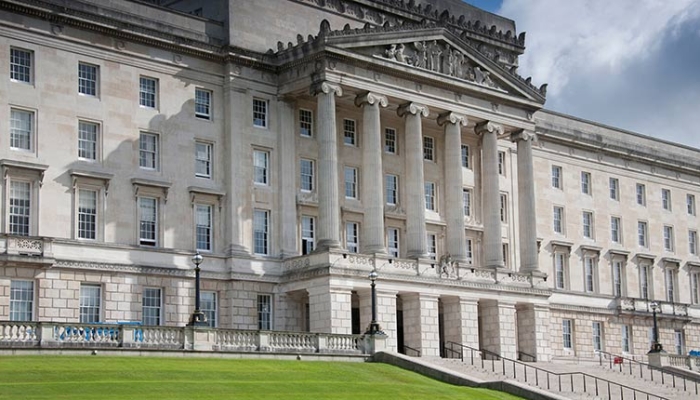What does the reestablishment of Stormont mean for Northern Ireland’s future?
The prolonged period of uncertainty in Northern Irish politics may finally be coming to an end with the restoration of local governance.
But what exactly does this mean for the future of politics in Northern Ireland, and what comes next? Read on for our overview of the reestablishment of Stormont.
What’s happened over the last few years?
The Brexit vote was the turning point which cast questions over Northern Ireland’s future position within the UK. The issue of Brexit became uniquely challenging for Northern Ireland. It remained inside the EU’s single market for goods (while the rest of the UK left) to allow for free-flowing trade between Northern Ireland and the Republic of Ireland.
Northern Ireland’s Brexit deal, however, was to see the introduction of trade barriers and an ‘Irish Sea Border’. In January 2019, when Theresa May’s Conservative Government was trying to get DUP support for the deal, it published ‘UK government commitments to Northern Ireland and its integral place in the United Kingdom’. The document promised that there would be ‘no divergence in the rules applied in Great Britain and Northern Ireland in areas covered by the protocol’. In other words, the whole of the UK would continue to align with whatever EU rules applied in Northern Ireland, thereby removing the need for what became known as the Brexit sea border.
This compromise was strongly opposed by Northern Ireland unionists (those who are loyal to the idea of ‘the United Kingdom’), with virtually none being happy with the fact Northern Ireland was being drawn closer to the EU. The Democratic Unionist Party (DUP) was opposed to this compromise so much that in February 2022, they abandoned the power-sharing agreement with the Irish republican party Sinn Féin.
Without one party, the power-sharing arrangement fell apart.
Developments over the last few months
In February 2023, Brussels made major concessions in replacing the original Northern Ireland protocol Brexit trading arrangements with the Windsor framework. The main features of the Framework were the creation of a new ‘green lane’, with very reduced checks and formalities for goods ‘not at risk’ of moving into the EU Single Market. It was thought at the time that easing the problems with the initial Brexit deal would end the boycott, but this didn’t happen.
In December, the UK Government offered Northern Ireland a £3.3bn financial package to aid the country’s ‘crumbling’ public services – with the condition that Stormont would be reestablished. Initially, this did not tempt the DUP, but following the largest strikes in more than 50 years in January, the party saw the real need for this injection of cash, and for the return of Stormont.
On 29 January 2024, then-DUP Leader Sir Jeffrey Donaldson met with colleagues to discuss how to get the Northern Ireland Executive back on track. The meeting lasted five hours and, once Sir Donaldson emerged, he confirmed that the party executive had accepted the proposals made by Prime Minister Rishi Sunak on the Irish Sea Border offer, thus ending a boycott that had lasted 726 days.
Two days later, the Secretary of State for Northern Ireland Chris Heaton-Harris unveiled the agreement that the Government had reached with the DUP to allow power sharing to resume in Northern Ireland, with Sinn Féin as the largest party.
The Government followed through on its promise to deliver £3.3 billion, and Sunak also made some tweaks to the Windsor Framework, including the lifting of some routine checks on goods coming into Northern Ireland from Great Britain, therefore reducing checks and paperwork on these goods. By Monday morning (5 February), Stormont was back up and running.
Where are we at now?
After two years of deadlock, Northern Ireland has a functioning government. However, with the deal coming under criticism from some Brexiteers, who argue that the new deal will prevent the UK from diverging further from EU rules, the future appears somewhat uncertain.
The return of Stormont also meant that Michelle O’Neill became the first nationalist First Minister of Northern Ireland. This was touted as a moment of ‘very great significance’ by Sinn Féin Leader Mary Lou McDonald, as this is the first time a nationalist politician has held the role since power-sharing was established after the Good Friday Agreement.
Prime Minister Sunak urged that the return of Stormont ‘is not constitutional change’ but about ‘delivering on the day-to-day things that matter to people’. Then-Irish Prime Minister Leo Varadkar echoed this sentiment, saying that ‘day-to-day concerns of people’ should be the priority of the executive over ‘constitutional questions’.
Mary Lou McDonald has also said that Irish reunification is within ‘touching distance’ and that there will be a referendum on the issue by 2030. The Good Friday Agreement states that the Secretary of State should call a referendum or ‘border poll’, if it appears ‘that a majority of those voting would express a wish that Northern Ireland should cease to be part of the United Kingdom and form part of a united Ireland’. A poll from LucidTalk found that a majority of respondents in Northern Ireland (49%) would be in favour of staying in the UK, with 39% supporting reunification, and 11% unsure. Support for a united Ireland was stronger among younger age groups, with most under-45s preferring reunification.
Depending on performance, Sinn Féin may be able to win over more voters in the Republic of Ireland in the next election. Additionally, if the deal holds up, Northern Ireland will be in a win-win position where it can trade freely with both the UK and the EU. The UK Government, too, want this to work – not just so that devolution returns but also so that the Sunak administration can chalk it up as a win. Sir Donaldson praised Prime Minister Sunak for the deal, saying he had ‘delivered where others haven’t’.
To connect with MPs and keep up to date with the political landscape, find out more about Vuelio’s Political Services.







Leave a Comment